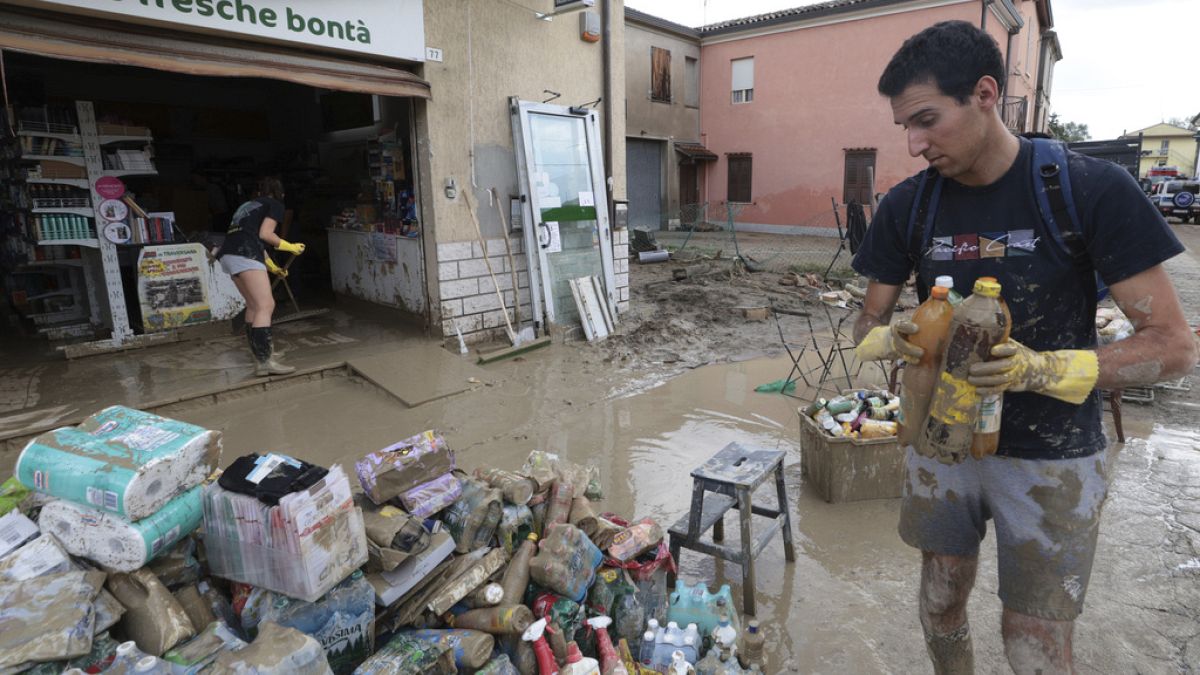Some residents of the city of Faenza had just completed house repairs after devastating floods in 2023 when their properties were submerged again this week.
Storm Boris, which has been pummelling Europe for the last week, has now reached northern Italy.
Towns and cities in the Emilia Romagna region have been hit by severe flooding forcing around 1,500 people to be evacuated from their homes. Two people are missing in the area of Bagnacavallo.
For many residents, it means reliving a nightmare that occurred only a year ago.
In the city of Faenza, houses are underwater for the third time in 16 months.
‘We had just finished repairing our houses’
After some areas of Emilia Romagna received as much as 300 millimetres of rain in 48 hours, the Marzone and Lamone rivers burst their banks.
For residents of the Borgo Durbecco zone of Faenza, it was a cruel case of recent history repeating itself.
In May 2023, the streets and houses of the area were inundated twice with water and mud. Heavy rain and mudslides killed 17 people and resulted in €8.5 billion worth of damage across Emilia Romagna, according to regional authorities.
The Artistation music school, a gym and the local basketball court were submerged and had to undergo renovations.
Those works had only just finished when this week’s torrential rain flooded them yet again.
Residents described to Italian news programme La 7 how they had just finished repairing and repainting the ground floors of their houses only to have them engulfed again in dirty water.
“We can’t sleep anymore, the news is always getting worse. We can’t take it anymore,” one woman told Italian news site Fanpage.
“The water reached us around two in the morning. We are sadly used to this situation by now,” Faenza resident Fiorenzo told local news site Il Piccolo.
He was rescued by the firebridge in a dinghy from his home together with his brother.
“It’s the third time, and this wasn’t even the worst. Now we’ll seek shelter with friends and relatives for the night.”
Another resident told La 7 that the family had chosen to remain in their house on the upper floors because the situation was nothing new.
“As long as the water doesn’t rise even higher we will stay here,” he said.
The local police and fire brigade have the phone numbers of those residents who have decided to stay in their houses so they can be rescued immediately when necessary.
Local authorities say wall to prevent flooding didn’t receive funding
A concrete wall had hastily been constructed along one road to block the overflowing river but it collapsed within hours on Wednesday night.
Local authorities say they have been pushing for a permanent blockade along the left bank – similar to one on the right bank which resisted the rising water this week.
However, they say they did not receive the green light for funding. “Due to bureaucratic delays nothing has been done,” mayor Massimo Isola told newspaper La Corriere di Bologna.
Was climate change responsible for the flooding in northern Italy?
Like last year, scientists are highlighting the role of climate change in the floods in Emilia Romagna.
Meteorologists say the extreme weather event was linked to the phenomenon of atmospheric blockage.
Normally, meteorological systems constantly move, bringing variable weather conditions.
But during an atmospheric blockage, high-altitude winds that normally drive the systems slow down, creating a sort of ‘traffic jam’ in the atmosphere.
This causes a certain type of weather, such as heavy rain or extreme temperatures, to remain blocked in a region for several days or weeks.
Experts say the elevated temperatures of the Mediterranean and the Adriatic seas have exacerbated this phenomenon.
“Vapour flows linked to a much warmer-than-average Mediterranean provide additional energy,” meteorologist Francesco Nucera told weather station 3bmeteo.
“What was improbable becomes possible in the new climate era. This is the third flood in Emilia in a year. Climate change is making these atmospheric blockages more frequent and intense.”
This week, the environmental organisation Legambiente reported that extreme weather events in Italy rose by 22 per cent in 2023, the hottest year on record.
Floods and river breaks increased by 170 per cent compared to 2022 and landslides after torrential rain were up by 64 per cent.

